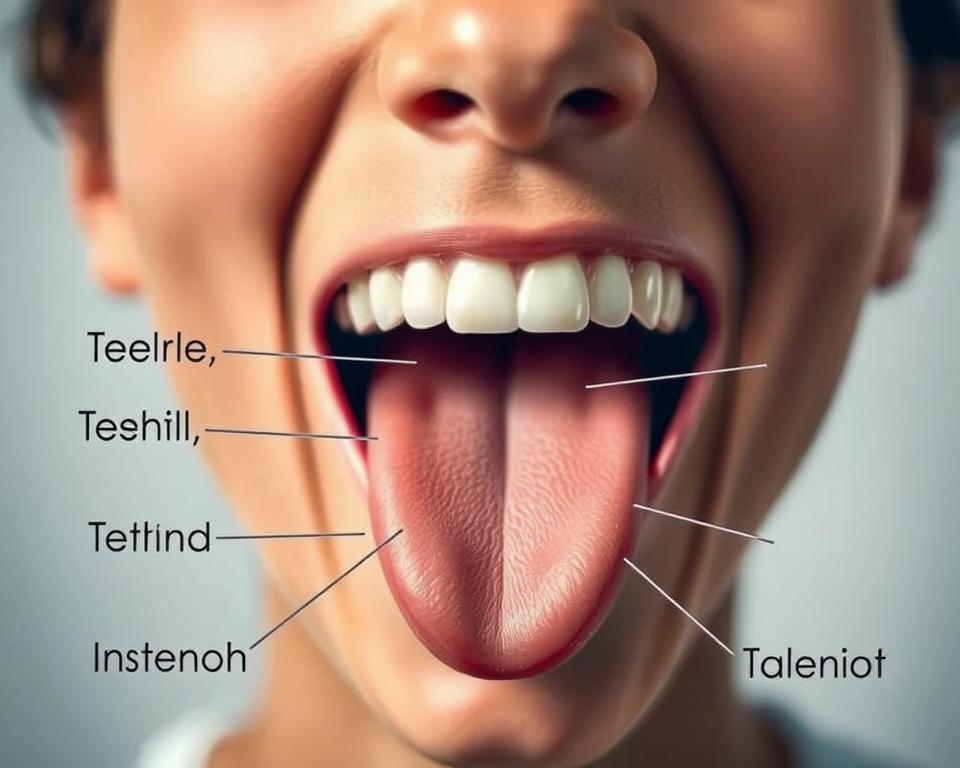
Mastering the Pronunciation of Technology
Did you know that nearly 60% of people in the tech industry face confusion and frustration because of mispronounced terms? This shows how important clear communication is in the fast-changing world of technology. Learning how to say tech terms right is key for both personal understanding and career success.
Technology affects our lives in many ways, from our phones to AI. Knowing how to say tech words correctly can make your interactions better and show your confidence. This guide will help you understand and use tech terms correctly, making you sound professional in any situation. Let’s explore how to say these terms like an expert.
Key Takeaways
- Over 60% of tech professionals face communication challenges due to mispronounced terms.
- Correct pronunciation of technology fosters clarity and confidence in discussions.
- Understanding pronunciation can significantly impact your professional image.
- This guide offers strategies for mastering technology terms accurately.
- Engaging with resources can enhance your pronunciation skills.
Understanding the Importance of Pronunciation in Technology
In the tech world, saying technology words right is key to clear talk. Getting it wrong can cause confusion, making it hard for teams to work together. Experts say clear speech builds trust and shows you’re reliable.
Clear speech makes you look more professional. It also helps create a positive vibe in meetings and teams.
Many see wrong pronunciation as a sign of not knowing your stuff. This can hurt your career chances. So, having a guide on how to say tech words right is vital for better communication.
The tech field is getting more global. With teams from all over, knowing how to say tech words right helps everyone understand each other. This leads to better teamwork and success in projects.

Common Mispronunciations of Technology Terms
Technology has a rich vocabulary, but many terms are hard to pronounce. This is due to language origins, lack of phonetic spellings, and slang changes. It’s key to use a technology pronunciation guide to avoid misunderstandings. For those who are not native speakers, these issues can cause a lot of miscommunication.
What Makes Technology Words Challenging?
Technology vocabulary can be complex for several reasons. Hearing others and the media can make it unclear how to say words. Here are some reasons why tech terms might be tricky:
- Foreign Language Influence: Many tech words come from languages other than English.
- Non-Phonetic Spellings: Words that don’t follow standard pronunciation rules can confuse people.
- Rapid Slang Evolution: New terms pop up fast, changing how they’re pronounced.
Examples of Frequently Mispronounced Terms
Knowing how to say tech terms correctly can improve communication. Here are some words that are often mispronounced, along with how they should be said:
| Term | Common Mispronunciation | Correct Pronunciation |
|---|---|---|
| GIF | /jif/ | /gif/ |
| HTTP | /aych-tee-tee-pee/ | /aych-tee-tee-pee/ |
| Wi-Fi | /wee-fee/ | /wy-fy/ |

Using a technology pronunciation guide can help people get the right pronunciation. This makes communication in the tech world clearer.
How to Pronounce Technology
Learning to say technology words right is all about phonetics. Breaking down big words into smaller parts makes them easier. The International Phonetic Alphabet (IPA) is a great tool for this. It helps you understand the sounds in words like “technology.”
Breaking Down the Phonetics
To get the hang of saying “technology,” break it down into syllables: /tɛkˈnɒl.ə.dʒi/. This way, you can practice each part separately. It helps you remember better. Other tech terms can be broken down the same way, making them easier to say.
| Term | Phonetic Representation |
|---|---|
| Algorithm | /ˈæl.ɡə.rɪ.ðəm/ |
| Data | /ˈdeɪ.tə/ or /ˈdæt.ə/ |
| Software | /ˈsɒf.twɛə/ |
Common Variations in Different Accents
Knowing how different accents say words can make talking clearer, especially in global talks. For example, Americans might say “technology” differently than Brits. Aussies might say it in their own special way. Knowing these differences helps you talk better with people from all over.
- American Accent: Often has a more rhotic sound, meaning “r” sounds at the end are clear.
- British Accent: Usually doesn’t say “r” sounds unless they’re before a vowel.
- Australian Accent: Has a unique way of blending vowel sounds, making it easy to spot.
Technology Pronunciation Guide for Beginners
Starting to learn about technology terms can be both fun and tough. A good guide helps beginners learn key terms easily. Knowing these words makes talking about tech better. Here’s a list of must-know terms for beginners.
Essential Terms to Start With
| Term | Pronunciation | Phonetic Spelling |
|---|---|---|
| Software | soft-ware | /ˈsɔːfˌtɛr/ |
| Hardware | hard-ware | /ˈhɑːrdˌwɛr/ |
| Cloud Computing | cloud computing | /klaʊd kəmˈpjuːtɪŋ/ |
| Algorithm | al-go-rithm | /ˈælɡəˌrɪðəm/ |
Listening Resources for Accurate Pronunciation
Learning these terms is a good start, but hearing them spoken is even better. Use different resources to listen to how these words sound in real life. Look into trusted sites like:
- Forvo – Pronunciation Dictionary
- Pronunciation Coach – YouTube Channel
These tools offer great listening practice. They help a lot in learning how to say tech words right.
Correct Pronunciation of Technology in a Global Context
The way we say “technology” changes a lot from one language to another. This shows how different cultures view tech terms. In Spanish, French, and Japanese, tech words are translated and said in ways that show cultural and language differences. Knowing these can help us talk and understand better in our global tech world.
How Different Languages Approach Technology Terms
Many languages have their own ways of saying tech words. For example, in Spanish, “tecnología” sounds softer than in English. French uses “technologie” with its own accent rules, which can be tricky for those who don’t speak it well. Japanese mixes English tech words into its language, changing how they sound to fit its sounds.
Knowing these differences helps us say tech words right in different places.
Influence of Globalization on Tech Vocabulary
Globalization has changed how we talk about tech. English is big in tech, so many countries use English tech words. This makes some tech words sound the same around the world. As tech talk grows, knowing how to say tech words right is key for talking across borders.
Technology Enunciation Tips to Enhance Clarity
Improving how you say technology terms can make your digital communication clearer. Fun activities like tongue twisters are great for improving your pronunciation. Let’s see how tongue twisters with tech terms can be fun and help your speech.
Practicing with Tongue Twisters
Tongue twisters are great for improving how you say words. They make it easier to say complex tech terms clearly. Here are some examples:
- How many computer coders could code in C if computer coders could code in C?
- Five fuzzy firewalls fastened to five fierce functions.
- Two techies tackling tech in tandem.
These tongue twisters use common tech words. They make learning to say these words fun. Adding tongue twisters to your daily routine can make practicing more enjoyable.
Record and Compare Your Pronunciation
Recording yourself saying tech terms is a smart way to improve. Listening to how native speakers say these words helps you see what you need to work on. This method helps you notice small differences in how you speak and boosts your confidence.
To get the most out of this, follow these steps:
- Choose tech terms you want to practice.
- Record yourself saying each term.
- Listen to how native speakers say these terms online.
- Compare your recordings to theirs.
- Make changes based on what you hear and try again.
Tech Pronunciation Help: Resources That Work
Finding the right resources can really help you get better at tech pronunciation. Many online tools offer great help in this area. They make it easier for anyone to improve their pronunciation skills.
These platforms have different features for learners at all levels. Here are two online tools that really stand out:
- HowToPronounce.com – This online tool lets you hear words pronounced correctly. It makes learning proper pronunciation easier.
- Lexipedia – This visual dictionary has audio guides for pronunciation. It helps you understand technology terms accurately.
Recently, AI tools have become popular for learning pronunciation. They offer personalized lessons. Two sources that talk about this trend are:
- MIT Technology Review – It discusses how AI can improve language learning and pronunciation.
- EdTech Magazine – It shows how AI helps with pronunciation through tailored feedback and advanced analytics.
Best Way to Say Technology for Effective Communication
Proper pronunciation is key in tech fields. It boosts credibility and makes a good impression in job interviews or networking. Experts say showing how to say technology right can make you stand out.
A study by CareerBuilder shows how important communication skills are in tech jobs. LinkedIn also points out how good pronunciation helps create a professional image.
The Impact of Proper Pronunciation on Professional Image
Clear pronunciation of tech terms shows confidence and knowledge. Using the right tricks can improve work interactions. It helps in teamwork and understanding.
For those aiming high in their careers, mastering tech pronunciation is essential. It shows your expertise.
When to Use Casual vs. Formal Pronunciation
Context is everything in pronunciation. You might need to switch between casual and formal in different situations. Knowing when to change can keep your communication clear and effective.
In relaxed settings, a casual tone is fine. But formal situations need a more polished way. Learning to switch between these can make you more adaptable and clear in your communication.
Understanding the Phonetics of Technology Terms
Learning the sounds behind tech terms is key to getting them right. Knowing phonetic symbols helps you tackle tech words. This part covers important phonetic symbols in tech and how to read them.
Phonetic Symbols and Their Meanings
Phonetic symbols stand for sounds in spoken words. Knowing these symbols helps you say tech terms correctly. Here are some common ones for tech:
| Phonetic Symbol | Sound Example | Term Using This Sound |
|---|---|---|
| /θ/ | as in “think” | Technology |
| /ʤ/ | as in “judge” | JavaScript |
| /ə/ | as in “sofa” | Server |
| /dɪf/ | as in “difficult” | Differential |
How to Read Phonetic Transcriptions
Phonetic transcriptions make tech terms easier to understand. Here’s how to read them:
- Get to know the International Phonetic Alphabet (IPA).
- Look at the symbols for each sound in the word.
- Practice saying the word with the sounds shown.
- Use online tools to hear how tech terms are pronounced.
By focusing on phonetics, you can improve your tech term pronunciation.
Technology Speaking Guide for Presentations
When you give a tech presentation, clear speaking is key. Certain tips can make your message hit home with your audience. This guide will help you speak better and keep your listeners hooked.
Tips for Speaking Clearly in Public
To make sure your audience gets what you’re saying, try these tips:
- Project Your Voice: A loud, clear voice shows confidence and makes sure everyone hears you.
- Pause for Emphasis: Pausing lets important points sink in, giving listeners time to think.
- Pacing: Change your speed to keep people interested. Speak slower for complex stuff and faster for simple parts.
How to Engage Your Audience with Clear Pronunciation
To grab and keep your audience’s attention, focus on clear speaking:
- Vary Pitch and Tone: Changing your pitch keeps things interesting and highlights key points.
- Effective Pausing: Pause wisely, letting listeners reflect after big moments or questions.
- Eye Contact: Eye contact makes your audience feel included. Look around the room as you speak.
Overcoming Anxiety in Technology Speaking Scenarios
Talking about technology can make some people feel anxious. This anxiety can stop them from doing well. To overcome this, practicing is crucial.
Rehearsing, doing mock presentations, and using visualization can help a lot. Starting with a positive attitude makes getting ready for tech talks easier.
Building Confidence Through Practice
Practicing often helps you get to know your stuff better. Rehearsing in front of others lets you get feedback and improve. Mock presentations make you feel more comfortable speaking in front of people.
Visualization, or imagining yourself doing well, also helps. These steps are important for beating anxiety.
Techniques to Manage Speaking Nervousness
It’s important to handle nervousness well to communicate effectively. Breathing exercises can calm you down right away. Positive affirmations boost your confidence, turning nervousness into excitement for sharing your knowledge.
Grounding techniques also help, keeping you focused on the moment. Learning these skills is key to a good technology speaking guide. It helps you speak with confidence.
Using Technology to Improve Your Pronunciation
Technology has opened up new ways to improve your pronunciation. Language learning apps and online exercises are designed to help you master technology terms. They are key tools in your journey to better pronunciation.
Language Learning Apps That Help
Many apps are now focused on improving your pronunciation. They make learning fun and effective. Here are some top choices:
- Duolingo: This app uses speech recognition to give you instant feedback on your pronunciation.
- Rosetta Stone: It uses an immersive method with audio and visual exercises to improve your pronunciation.
- Babbel: It offers lessons that include pronunciation practice to help you learn everyday technology vocabulary.
Interactive Pronunciation Exercises Online
Online exercises offer fun ways to practice and improve your pronunciation. Sites like FluentU and Speechling are great for enhancing your technology vocabulary. They focus on phonetics and sound through practical activities:
- FluentU: It uses videos to teach technology-related content, helping you hear pronunciation in real contexts.
- Speechling: This platform lets you hear native speakers and compare your pronunciation with theirs.
Engaging with Native Speakers for Feedback
Finding conversation partners and joining language exchanges can really help you get better at saying tech terms. Talking with native speakers gives you real-time feedback and hands-on practice. Meetup and Tandem are great places to find groups and connections for language learners. They help you feel more confident and improve your speaking skills.
Finding Conversation Partners and Language Exchanges
Online platforms are great for finding people who love tech as much as you do. Here are some places to check out:
- Meetup: Look for local groups where you can practice speaking face-to-face.
- Tandem: Chat with language learners from all over the world through text and voice.
The Role of Community in Pronunciation Mastery
Being part of a supportive community can really help you get better at pronunciation. Talking with others not only keeps you company but also boosts your motivation. Check out these platforms:
- Speech Language Pathology Groups: Get support from a community focused on clear communication.
- Reddit: Join language learning communities on Reddit to share your experiences.
Technology Pronunciation Tricks for Daily Use
Using tech terms in daily talks helps you get better at them. It makes learning fun and easy. Try using tech words in everyday chats or when talking about tech stuff.
Incorporating Terms into Everyday Conversations
It’s fun to use tech words in talks. Here are some tips to make it easy:
- Talk about new gadgets with friends or family.
- Share tech news and start discussions.
- Use tech words when explaining projects at work or school.
Utilizing Social Media to Practice Pronunciation
Social media is great for practicing your pronunciation. Join tech groups or discuss topics you like. You can also record yourself to improve how clear you sound. Here are some ideas:
- Do live videos on Facebook or Instagram.
- Share your thoughts on tech trends using the right words.
- Follow tech influencers and learn from their content.
The Evolution of Technology Pronunciation Over Time
The world of technology language is always changing. This change comes from new ways of communicating and using digital tools. As technology grows, so does the vocabulary, leading to new ways of saying tech terms.
This shift shows how language around technology changes with society. It’s a fascinating look at how words evolve with our world.
Historical Context of Tech Vocabulary Changes
Over the years, how we say tech terms has changed a lot. At first, these words were strange to us. They came from engineering and science.
But as the internet made technology a part of our lives, these words became common. Now, we say them in a way that’s easy for everyone to understand.
Looking Ahead: Future Trends in Technology Language
Artificial intelligence and machine learning are changing tech language again. New words and ways of saying things will come. For example, “deep learning” and “blockchain” might sound different as they become part of our daily talk.
Conclusion
Learning to pronounce technology terms correctly is key in today’s digital world. We’ve looked at why it matters, common mistakes, and how to improve. By working on these areas, you can make a big difference in how you talk to others.
Practicing regularly and using the tips we shared can boost your confidence. Good communication starts with how well you say tech words. Using these strategies can help you succeed in a global, tech-connected world.
Keep learning to improve your tech talk. This can lead to better teamwork and networking. Spend time practicing, ask for feedback, and use online tools to make your tech talk stand out.
FAQ
How do you pronounce “technology”?
In American English, “technology” is pronounced as /tɛkˈnɒlədʒi/. It breaks down into tek-ˈnol-ə-jee.
What are some technology enunciation tips?
To speak clearly, break “technology” into syllables and speak slowly. Try tongue twisters with this term to get better.
Are there resources for learning the pronunciation of technology terms?
Yes! Forvo and HowToPronounce.com have audio examples. YouTube channels also offer pronunciation practice.
What common mispronunciations should I be aware of?
“Wi-Fi” is often mispronounced as “why-fye.” “HTTP” is said as “aich-tee-tee-pee.”
How can I practice my technology pronunciation?
Record yourself saying technology terms. Then, compare it to native speakers. This will show you what to work on.
Why is the correct pronunciation of technology important?
Correct pronunciation helps you communicate well. It also makes you sound more professional, especially in tech.
What are the best ways to say technology in a formal setting?
In formal settings, say “technology” clearly, focusing on the middle syllable. Avoid using slang or short forms.
Can accents affect the pronunciation of technology terms?
Yes, accents can change how you say technology terms. For example, Americans and Brits might pronounce it differently.
What are some tech pronunciation tricks for daily use?
Use technology terms in everyday talks. Practice on social media. Online discussions can improve your speaking skills.
Are there apps that can help with pronunciation?
Yes! Apps like Duolingo and Rosetta Stone have features for improving pronunciation. They cover technology vocabulary too.







